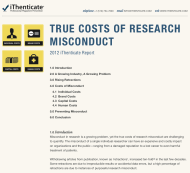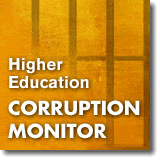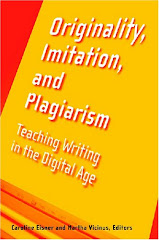Earlier this month, we highlighted the concerns of the editors of the ACS Nano journal about self-plagiarism, otherwise known as duplication. The editor of the American Journal of Roentgenology (AJR) — that’s radiology, for the uninitiated — has similar concerns, but about plagiarism of others’ work.
"Preliminary data including all article types accepted by AJR show that the amount of duplication varies significantly with different article types. For example, duplication in Original Research articles may be up to 58% and in Memorials, 23%. That is not to say that all duplications are significant or deliberate. For example, most computer software packages pick up words that are the same in a given sentence, pulse sequences that vary with vendors, and other similarities that may be appropriately referenced or quoted."
The ORI, Berquist notes, “has reported that up to 25% of their misconduct allegations involve plagiarism.” So how can authors avoid it?
Start by reading the guidelines, he writes, from the International Committee of Medical Journal Editors (ICMJE) and each journal to which you’re submitting. And it’s OK to paraphrase or summarize someone else’s work, as long as you quote or footnote:
"The corresponding author has the ultimate responsibility to be certain that all coauthors have used the appropriate citations and procedures. There are appropriate methods for paraphrasing or summarizing someone else’s work. These have been summarized by K. Shashok [11]. When this cannot be accomplished, one should use quotations or footnotes. For example, “correct citation and accurate referencing of sources are effective ways to prevent unintentional plagiarism,” as stated by K. Shashok in reference 10 of this editorial. I quoted this work directly and placed it in quotation marks with reference to the author by name and reference number. Using quotation marks is double protection and should be accomplished when statements are taken verbatim from another work. Manuscript reviewers will appreciate this honest approach with appropriate credit for the other author’s work. Permission from the original publisher is required if multiple paragraphs are quoted from another’s research work. One must always acknowledge someone else’s work even if it is paraphrased. Finally, if there are any concerns about previously published content, they should be noted in the cover letter to the editor when submitting the manuscript to the journal [9]."
These seem like eminently sensible suggestions, although we should note that in different settings, fair use provisions mean permission is not always required.
If authors are found to have plagiarized, there are serious consequences:
"Depending on the level of concern and the explanation, the allegations may be dropped and the authors warned to be aware of the potential misconduct when submitting future manuscripts to AJR or any journal. If the authors’ responses are not deemed satisfactory, an independent panel is selected to review the allegations. If the allegations are confirmed, the authors’ institutions are brought into the picture. In several cases we have required an organized remediation of an entire department with documentation of their process and outcomes. The worst-case scenario is multiyear sanctions that prevent the authors from submitting manuscripts for publication. To date, this has not been necessary during my tenure as Editor in Chief."
arXiv, the preprint server, has another good lesson in what happens when authors don’t follow the steps described in the AJR. Take a look at this paper, “Libertarian free will and quantum indeterminism,” submitted earlier this week. The comment field reads:
"Comments: 11 pages. arXiv admin note: text overlap with arXiv:1011.4898"
A search for “text overlap” on arXiv reveals more than 600 cases of such notes. Think those papers have a good chance of being published?







